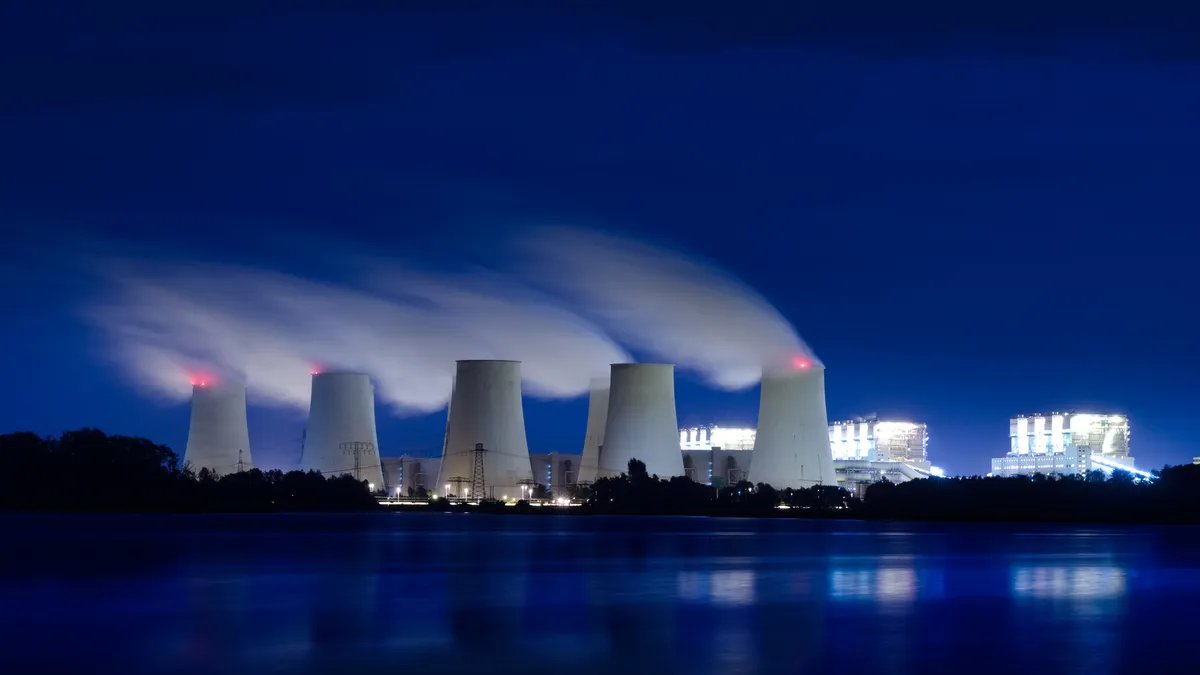Dive Brief:
- More than one-third of nuclear plants in the United States are at risk of early retirement, according to a new report from the Union of Concerned Scientists. The analysis concluded 21 of 60 facilities could be prematurely closed in the next decade.
- The report recommends state and federal policies to help support nuclear plants and their emissions-free generation, including a national carbon price or a low-carbon electricity standard.
- The potential loss of 13%-26% of the nation's nuclear capacity has concerned climate activists, and the report concludes that without such clean generation, the power sector's carbon emissions could rise 4% to 6% by 2035.
Dive Insight:
Nuclear plant closures have made headlines this year, as states have struggled to develop policies that can ensure them an adequate rate of return. While this has been closely watched by climate hawks, the UCS report brings the issue into sharp relief.
There are 17 states with uneconomic plants, or reactors already scheduled to close, largely in the Midwest and Mid-Atlantic regions.
This year, the 21 at-risk plants provided about 22.7 GW of operating capacity combined. Operating costs at the plants, on average, are projected to exceed revenues between 2018 and 2022. Those plants represent 22% of the country's nuclear capacity, according to the report.
"The possibility that the nation will replace existing nuclear plants with natural gas and coal rather than low-carbon sources raises serious concerns about our ability to achieve the deep cuts in carbon emissions needed to limit the worst impacts of climate change," the report says.
The Nuclear Energy Institute (NEI) hailed the analysis, which it said adds to "increasing momentum" for finding ways to recognize nuclear energy's importance to the clean energy mix.
What is needed, the UCS report concludes, is a mixture of state and national carbon-reduction policies that would support the plants in a technology neutral way.
“The best solution to this problem by far is a national carbon price implemented alongside a suite of economy-wide complementary policies,” Jeremy Richardson, co-author and senior energy analyst at UCS, said in a statement.
“A carbon price would level the playing field for all low-carbon technologies and address the current market failure."
In addition to preserving existing nuclear plants, a national carbon price would also increase investments in solar and wind resources, the report found, along with helping make low-carbon technologies, such as carbon capture and storage, economically viable.
"Unlike the Trump administration’s deeply flawed proposals to bail out uneconomic coal and nuclear plants, policies that value the low-carbon attributes of nuclear power, renewable energy, energy efficiency, electricity storage, and other technologies are critical for state and national efforts to significantly reduce emissions and help limit climate impacts," the report said.
With the right mix of policies, the group concluded that all the unprofitable and marginally economic plants at-risk of early closure could be saved, helping the U.S. achieve emissions reductions called for by the Paris climate agreement, which the Trump administration withdrew from in June 2017.
The World Resources Institutive (WRI) also hailed the UCS report, calling on the U.S. to "use all instruments at our disposal" to tackle climate change.
"With sharply declining costs of renewable energy, delaying closures of nuclear plants would also increase the chance that they would be replaced by renewable sources," WRI President and CEO Andrew Steer said in a statement.















